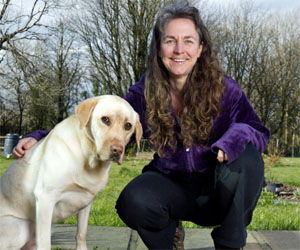


Understanding Cat Hunting Instincts
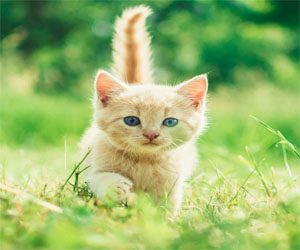
Cats have long been admired for their hunting prowess, and their innate predatory instincts are deeply ingrained in their DNA. These instincts have been honed over millennia, making cats remarkably effective hunters. In this article, we will delve into the fascinating world of cat hunting instincts, exploring the reasons behind their hunting behavior and its impact on their lives as domestic companions.
1. Origins Of Hunting Instincts: Cats are natural-born hunters, a trait they inherited from their wild ancestors. In the wild, hunting is essential for survival, providing cats with food, exercise, and mental stimulation. These instincts have persisted through domestication, and even pampered indoor cats retain a strong desire to hunt.
2. Instinctual Behaviors:
Cat hunting instincts are manifested through various behaviors:
Stalking: Cats often stalk their prey by crouching low and moving stealthily. This behavior can be observed when they watch birds through a window or engage in interactive play with toys.
Pouncing: The classic pounce is a vital hunting skill. Cats will leap onto their prey, displaying precise timing and agility.
Capture And Kill: After pouncing, cats use their sharp claws and teeth to catch and subdue their prey. While domestic cats don't necessarily intend to kill, they practice this behavior during play.
Playful Ambushes: Cats engage in playful ambushes with other pets or even unsuspecting humans. These antics serve as a form of practice for real hunting.
3. Benefits Of Hunting Instincts:
Hunting instincts offer several advantages for cats:
Mental Stimulation: Hunting behavior keeps a cat's mind sharp and active. It provides a sense of purpose and wards off boredom.
Exercise: Hunting-related activities, such as stalking and pouncing, provide physical exercise that contributes to a cat's overall well-being.
Bonding: Engaging in play that mimics hunting allows cats to bond with their owners and build trust.
4. Managing Hunting Instincts In Indoor Cats:
Indoor cats have fewer opportunities to satisfy their hunting instincts naturally. To ensure their well-being, consider the following:
Interactive Toys: Provide toys that mimic prey animals or objects to satisfy their hunting desires.
Regular Playtime: Spend quality time engaging in interactive play with your cat. Toys that dangle, move unpredictably, or encourage chasing can be particularly effective.
Rotate Toys: Cats may become bored with the same toys over time. Rotate their toys to keep playtime engaging.
Outdoor Enclosures: If possible, create a safe outdoor enclosure or a "catio" where your cat can experience the outdoors without the dangers of roaming freely.
5. Safeguarding Wildlife: It's essential to be aware that hunting instincts can pose a threat to local wildlife. Cats may harm birds and small mammals when allowed to roam outdoors. To protect both your cat and local wildlife, consider using a harness and leash for outdoor time, or ensure your yard is secure.
Cat hunting instincts are a fundamental aspect of their nature. Understanding and accommodating these instincts with play, toys, and safe outdoor experiences can lead to a healthier, happier, and more fulfilled feline companion. By providing opportunities for your cat to express their hunting behavior, you are respecting and nurturing their innate desires while strengthening your bond as a responsible and caring cat owner.
A Cosmic Connection?
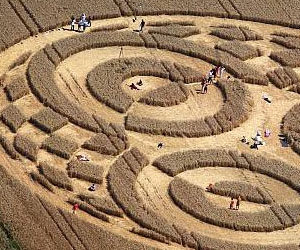 Extraterrestrial Communication
Extraterrestrial Communication
Advocates of the extraterrestrial hypothesis propose that crop circles serve as a form of communication between advanced civilizations and humanity. They believe that these intricate patterns convey messages, symbols, or even mathematical codes that can hold the key to understanding the intentions or knowledge of these extraterrestrial beings.
Unexplained Anomalies
One of the intriguing aspects often cited in connection with this theory is the presence of unexplained anomalies in the vicinity of crop circles. Witnesses have reported sightings of strange lights, glowing orbs, and other unidentified aerial phenomena near the formations. These accounts have led some to speculate that these phenomena are linked to the arrival or departure of extraterrestrial craft.
Challenges To The Theory
While the idea of extraterrestrial intelligence creating crop circles is compelling, it faces significant challenges. Skeptics argue that the majority of crop circles are, in fact, the work of human artists who use simple tools such as boards and ropes to create their designs. They contend that the intricate patterns can be achieved without the need for advanced technology.
Human-Made Crop Circles
Human-made crop circles have been well-documented and even demonstrated by individuals and groups. These formations are often the result of careful planning and artistic intention rather than extraterrestrial messages. The presence of artistic and geometric elements in many crop circles supports the argument for human involvement.
Scientific Investigations
In response to the extraterrestrial hypothesis, scientific investigations have been conducted to study the physical and biological effects of crop circles. These studies aim to determine whether there are any unique characteristics in crop circle formations that could support the notion of extraterrestrial involvement. While some findings have been intriguing, no definitive evidence has emerged to substantiate the theory.
 Nostradamus, a French physician and astrologer born in 1503, is often regarded as a visionary whose words continue to perplex believers and skeptics alike. His most famous work, "Les Prophéties," is a collection of enigmatic quatrains that some claim contain references to natural calamities. Although Nostradamus is not often associated directly with the prediction of specific natural disasters, his vague yet intriguing verses have been interpreted in various ways to suggest that he might have possessed insights into these catastrophic events.
Nostradamus, a French physician and astrologer born in 1503, is often regarded as a visionary whose words continue to perplex believers and skeptics alike. His most famous work, "Les Prophéties," is a collection of enigmatic quatrains that some claim contain references to natural calamities. Although Nostradamus is not often associated directly with the prediction of specific natural disasters, his vague yet intriguing verses have been interpreted in various ways to suggest that he might have possessed insights into these catastrophic events.
One of the most well-known interpretations of Nostradamus' prophecies relates to natural disasters is his supposed prediction of the Great Fire of London in 1666. In Quatrain 97 of Century 2, he wrote:
"The blood of the just will commit a fault at London,
Burnt through lightning of twenty threes the six:
The ancient lady will fall from her high place,
Several of the same sect will be killed."
While this quatrain appears to describe a fiery event in London, skeptics argue that it is open to a wide range of interpretations and could apply to any number of incidents. Proponents of Nostradamus, however, suggest that his cryptic language conceals the true nature of the disaster, leaving room for various interpretations.
Nostradamus' prophecies have also been linked to earthquakes. In Quatrain 87 of Century 10, he wrote:
"At forty-five degrees, the sky will burn,
Fire to approach the great new city:
In an instant a great scattered flame will leap up,
When one will want to demand proof of the Normans."
This quatrain is often seen as a reference to a major earthquake striking a new city, causing widespread destruction and panic. Nostradamus' use of metaphorical language and symbolism has made it possible for his followers to find connections between his writings and historical natural disasters.
 3. Litter Box Maintenance
3. Litter Box Maintenance
A clean litter box is essential for your cat's hygiene and well-being. Scoop waste daily and change the litter regularly. Cats are notoriously picky about their litter boxes, so keeping it clean is crucial.
4. Regular Veterinary Care
Schedule regular check-ups with a veterinarian to monitor your cat's health. Vaccinations, preventive care, and dental check-ups are essential to ensure a long and healthy life for your feline companion.
5. Grooming And Hygiene
Brush your cat regularly to prevent matting and reduce shedding. Some cats may require occasional baths, so be prepared for this as well. Keep an eye on your cat's claws and provide scratching posts to help them maintain their claws.
6. Provide Mental Stimulation
Cats are curious creatures and need mental stimulation. Toys, puzzles, and interactive playtime are vital for their happiness. Cats enjoy chasing feather toys, laser pointers, and even simple crumpled paper balls.
7. Social Interaction
While cats are known for their independence, they also crave social interaction. Spend quality time with your cat, petting and talking to them. Building a strong bond with your cat will make them feel loved and secure.
8. Safety First
Keep toxic plants, chemicals, and small objects that can be swallowed out of reach. Cats are known for their curiosity, so make sure your home is safe for them.
9. Watch For Signs Of Illness
Pay close attention to your cat's behavior and appearance. Any sudden changes could be a sign of illness. If you notice anything unusual, consult your veterinarian immediately.




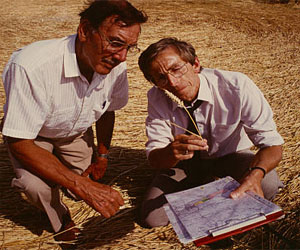
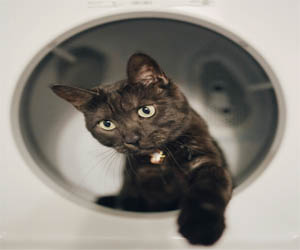
 REM (Rapid Eye Movement) Sleep: The REM stage is where most vivid, memorable dreams occur. During REM sleep, our brains become highly active, and our bodies essentially become paralyzed to prevent us from acting out our dreams physically. REM dreams are often emotionally charged and may reflect our deepest desires, fears, and concerns.
REM (Rapid Eye Movement) Sleep: The REM stage is where most vivid, memorable dreams occur. During REM sleep, our brains become highly active, and our bodies essentially become paralyzed to prevent us from acting out our dreams physically. REM dreams are often emotionally charged and may reflect our deepest desires, fears, and concerns.
Lucid Dreaming: Lucid dreaming is a unique state where the dreamer becomes aware that they are dreaming. This state allows individuals to take control of the dream's narrative, explore their subconscious, and even transcend the boundaries of reality. Lucid dreaming is a fascinating blend of self-awareness and creativity within the dream state.
Nightmares: Nightmares are dream states characterized by intense fear, anxiety, or horror. These unsettling dreams can be triggered by stress, trauma, or unresolved emotions, serving as a natural coping mechanism for processing negative experiences.
Daydreaming: Daydreams occur when an individual's mind drifts away from their immediate surroundings and focuses on an imagined scenario, thought, or memory. While daydreaming can occur during waking hours, it is, in essence, a form of dream state where the mind creates its own narrative.
Hypnagogia And Hypnopompia: These are transitional states between wakefulness and sleep. Hypnagogia occurs as you drift into sleep, while hypnopompia takes place upon waking. These states often produce vivid imagery, fleeting thoughts, or hallucinations, offering a glimpse into the boundary between wakefulness and dreams.
 Environmental Conservation: A smaller carbon footprint helps protect natural ecosystems, reducing habitat destruction, and preserving biodiversity. This is vital for the health of the planet's diverse flora and fauna.
Environmental Conservation: A smaller carbon footprint helps protect natural ecosystems, reducing habitat destruction, and preserving biodiversity. This is vital for the health of the planet's diverse flora and fauna.
Resource Conservation: Many of the activities that contribute to carbon footprints, such as energy consumption and waste generation, also deplete finite resources. Reducing these activities helps conserve resources like water and fossil fuels.
Key Strategies For Carbon Footprint Reduction:
Energy Efficiency: Improving energy efficiency is a fundamental step in reducing one's carbon footprint. This can be achieved through actions like using energy-efficient appliances, insulating homes, and optimizing heating and cooling systems.
Renewable Energy: Transitioning to clean, renewable energy sources like solar and wind power significantly reduces carbon emissions. Installing solar panels on homes and businesses is an increasingly accessible option.
Sustainable Transportation: Using public transportation, carpooling, biking, walking, or driving fuel-efficient or electric vehicles all contribute to reduced emissions from the transportation sector.
Waste Reduction: Minimizing waste production through recycling and composting reduces the emissions associated with waste disposal in landfills.
Low-Carbon Diet: Adopting a diet that includes more plant-based foods and less meat, particularly beef, can lower the carbon footprint of food consumption.